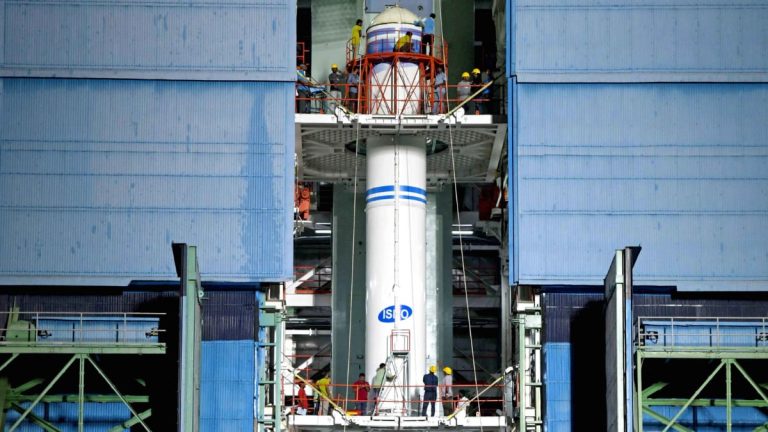
The SSLV's third development flight is scheduled to launch on Friday. (Photo: X/@ISRO)
The SSLV rocket is a three-stage launch vehicle with a height of 34 meters and a diameter of 2 meters. It is designed to send satellites weighing about 500 kilograms into a 500-kilometer flat orbit.
The countdown started on Friday as the Indian Space Research Organization (ISRO) prepares to launch an Earth observation satellite on the third and final development flight of its Small Satellite Launch Vehicle (SSLV) mission.
The space agency said the launch is planned for one hour at 9:17 am on Friday from the first launch pad at the Satish Dhawan Space Center in Sriharikota, Andhra Pradesh.
ISRO said in a post on The half-hour countdown begins at 02.47 IST.
SSLV-D3/EOS-08️ Mission: The third development flight of SSLV is planned to be launched on August 16, 2024. The launch window starts at 09:17 and the launch time is one hour. IST pic.twitter.com/JWxq9X6rjk
— Indian Space Research Organization (@isro) August 12, 2024
Initially, the satellite was scheduled to be launched at 9:17 a.m. on August 15, but was later rescheduled to August 16.
The SSLV rocket is 34 meters high and the three-stage launch vehicle has a diameter of 2 meters. It is designed to send satellites weighing about 500 kilograms into a 500-kilometer flat orbit. Its lift-off weight is approximately 120 tons.
SSLV's smallest rocket will carry a 175.5-kg Earth Observation Satellite (EOS-8) equipped with three payloads: an electro-optical infrared payload, a GNSS reflection payload and a silicon carbide ultraviolet dosimeter.
The first payload, EOIR, is designed to capture images in the mid-wave infrared (MIR) and long-wave infrared (LWIR) bands during the day and night, suitable for satellite surveillance, disaster monitoring, environmental monitoring, fire detection, volcanic activity observation, industry and power generation Factory disaster monitoring. The second GNSS-R payload demonstrates the ability to use GNSS-R based remote sensing technology for applications such as ocean surface wind analysis, soil moisture assessment, cryosphere research in the Himalayas, flood detection and inland water body detection. The third payload, a silicon carbide UV dosimeter, monitors UV irradiance at the viewport of the Gaganya mission's crew module and serves as a high-dose alarm sensor for gamma radiation.
The spacecraft has a mission life of one year and generates approximately 420 watts of electricity.
ISRO said the main objectives of the mission include designing and developing microsatellites, creating payload instruments compatible with the microsatellite bus, and integrating new technologies required to operate satellites in the future.
The mission will also enable ISRO's commercial arm NewSpace India Ltd to collaborate with industry for commercial launches using such small satellite launch vehicles.
The SSLV-D3-EOS-08 mission follows the successful launch of the second test flight of the Small Satellite Launch Vehicle (SSLV-D2-EOS-07) in February 2023. tasks.
(Inputs from PTI)
